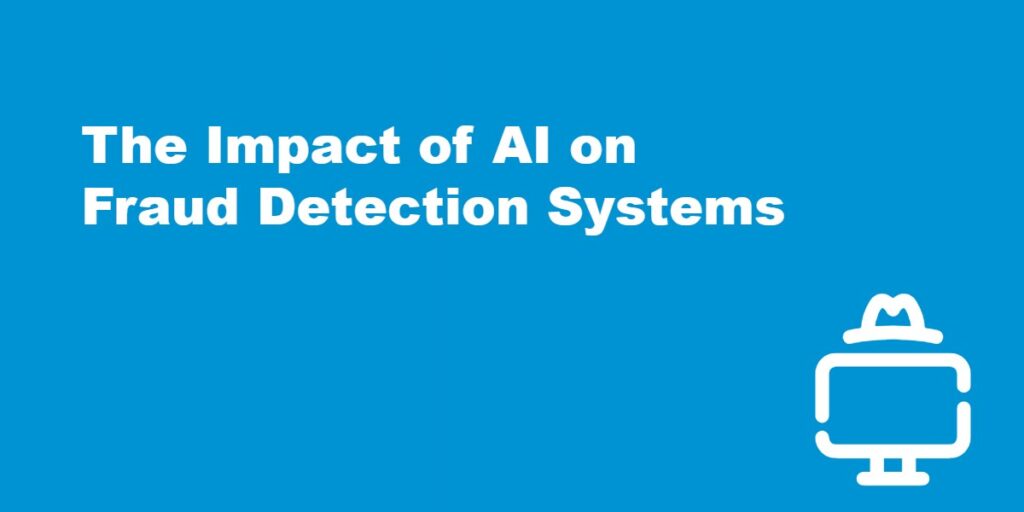Artificial Intelligence (AI) has dramatically transformed various industries, with fraud detection standing out as a prime example. AI’s integration into fraud detection systems has introduced new methods for identifying and mitigating fraudulent activities with unprecedented precision.
I. Introduction
As with any advanced technology, AI brings with it both benefits and significant challenges. While AI enhances our ability to combat fraud, it also provides new tools for fraudsters, who can exploit these technologies to refine and amplify their schemes. This dual-use nature of AI complicates the landscape, necessitating careful navigation of its positive contributions and potential pitfalls.
II. Strengths of AI in Fraud Detection
Modern AI’s ability to analyze and learn from vast amounts of data enhances the efficiency of fraud detection systems, allowing for early intervention before fraud escalates into more serious issues. Additionally, the adaptability of machine learning models means they can continuously refine their detection methods as new fraud tactics emerge, maintaining effectiveness over time.
Pattern Recognition and Machine Learning
One of AI’s most compelling strengths in fraud detection is its ability to recognize patterns through machine learning. AI systems excel at analyzing extensive datasets to identify anomalies that might indicate fraudulent activity. These algorithms can spot subtle deviations from typical behavior that might escape human analysts. For example, AI can sift through millions of financial transactions to flag unusual activities, such as sudden large withdrawals or atypical purchasing patterns.
Generative AI and Its Applications
Generative AI, including models like OpenAI’s ChatGPT, represents a significant advancement in enhancing fraud detection systems. These models can generate synthetic data to train detection algorithms, improving their ability to recognize and respond to emerging fraud scenarios.
By simulating various types of fraud, generative AI helps systems anticipate and prepare for new fraud tactics that may not yet be present in real-world data. For instance, creating synthetic phishing emails with varying levels of complexity can help fine-tune algorithms to detect even the most deceptive scams. This proactive approach allows fraud detection systems to stay ahead of evolving threats, continually refining their resilience against new forms of fraud.
Enhanced Communication and Translation
AI’s advancements also extend to communication and translation, which are crucial for effective fraud detection. AI tools capable of generating coherent and contextually appropriate messages can help create more believable simulations for testing detection systems. These tools are valuable for crafting communications that mimic fraudulent schemes, thereby refining systems designed to catch phishing and social engineering scams.
Moreover, AI-powered translation tools enhance fraud detection on a global scale by enabling effective monitoring and analysis of communications in multiple languages. For international financial institutions, this capability is essential for detecting fraudulent activities across diverse linguistic and cultural contexts, thereby improving overall security and fraud detection effectiveness.
Even agencies like the US Department of the Treasury have managed to recover significant sums by reworking their fraud detection processes with more sophisticated tools. AI’s language models can analyze and cross-reference communications from different regions, spotting patterns and threats that may otherwise be overlooked. The question remains – in what cases is AI appropriate, or even recommended, when trying to enhance fraud detection capabilities?
III. Risks and Ethical Concerns
The ability to generate realistic fake identities, documents, and communications complicates fraud detection efforts, emphasizing the need for ongoing vigilance and adaptation in combating these evolving threats. As AI technologies continue to advance, fraudsters may develop even more sophisticated methods, requiring continuous updates to detection systems and strategies.
Fraudsters Utilizing AI
While AI offers powerful tools for fraud detection, it also equips fraudsters with advanced methods to execute their schemes. AI enables the creation of highly convincing deep fakes, including audio and video content, that can deceive individuals and organizations. For instance, deep fake technology has been used to impersonate CEOs, tricking employees into transferring significant sums of money. Such incidents highlight the potential for AI to be exploited in sophisticated fraud schemes that are difficult to detect.
Generative AI Dependence
The reliance on generative AI tools, such as ChatGPT, introduces several concerns. If these tools encounter malfunctions or inaccuracies, they could negatively impact the performance of fraud detection systems that depend on them. Issues like AI hallucinations—where the system generates incorrect or misleading information—pose significant risks. For example, if an AI model generates erroneous data or scenarios that do not reflect actual fraud patterns, it could lead to false positives or missed detections, undermining the system’s effectiveness.
Dependence on these tools can create vulnerabilities if they are not rigorously tested and validated before deployment. Regular updates and oversight are necessary to ensure the accuracy and reliability of AI tools used in fraud detection.
Data Privacy and Security
AI’s involvement in handling sensitive data necessitates stringent privacy and security measures to prevent breaches and misuse. The risk of unauthorized access or exposure to confidential information is significant and must be carefully managed. Implementing robust data privacy standards is essential to protect both individuals and organizations from potential harm resulting from AI-driven fraud detection systems.
Effective safeguards should be in place to prevent data breaches and ensure that AI systems do not inadvertently compromise sensitive information. Maintaining strong security protocols helps build trust in AI technologies and ensures they are used responsibly and securely. Additionally, implementing encryption and access controls can further safeguard data from unauthorized access and ensure compliance with privacy regulations.
IV. Case Studies and Positive Impact Examples
Here are some case studies where AI has made a positive impact.
Reducing Credit Card Fraud
Major financial institutions, such as Visa and Mastercard, have successfully leveraged AI-based fraud detection systems to combat credit card fraud. These systems utilize machine learning (ML) models to monitor transaction patterns in real time, significantly reducing the incidence of fraudulent activities. For example, Visa employs advanced analytics to detect and flag suspicious transactions, resulting in a notable decrease in fraud rates and enhanced security for cardholders.
By analyzing vast amounts of transaction data, AI helps identify and prevent fraudulent activities before they escalate, contributing to greater confidence in digital transactions and overall financial security. Additionally, AI’s ability to adapt to new fraud trends ensures that detection systems remain effective against emerging threats.
Cybersecurity – Preventing Phishing Attacks
Companies like Google have developed advanced AI tools to tackle phishing attacks effectively. Google’s machine learning-based phishing detection system has achieved impressive results, blocking over 99.9% of phishing attempts targeting Gmail users. This high success rate is due to the system’s ability to identify and filter out fraudulent emails before they reach users’ inboxes. For example, Google’s AI system analyzes email content, sender reputation, and user behavior patterns to detect and prevent phishing attempts.
By leveraging AI to enhance email security, Google has set a high standard for phishing prevention. This demonstrates the significant impact that AI can have on protecting users from malicious schemes and ensuring robust cybersecurity measures. This approach not only safeguards users but also helps maintain the integrity of digital communications.
Negative Impact Examples
Here are some examples where AI has had a negative impact.
AI Misuse – Deepfake Fraud in Financial Institutions
The misuse of deepfake technology for financial fraud has exposed critical vulnerabilities in fraud detection systems. Deepfake technology, which creates highly realistic fake audio and video content, has been used to perpetrate sophisticated fraud schemes. For instance, deep fake audio was employed to impersonate a CEO, tricking employees into transferring large sums of money. This case highlights the potential for AI to be exploited in advanced fraud schemes that are challenging to detect and prevent.
As AI technology continues to evolve, so do the tactics employed by fraudsters, necessitating ongoing efforts to adapt and enhance fraud detection strategies. Financial institutions must invest in advanced detection methods and employee training to address the growing threat posed by deepfake technology.
AI Tool Failure – Bias in Financial Fraud Detection
AI systems have occasionally demonstrated biases due to the data they are trained on, leading to unfair outcomes in fraud detection. For example, biased data in predictive policing and credit scoring systems has resulted in discriminatory practices. In fraud detection, similar biases can arise if AI models are trained on skewed datasets, potentially leading to inaccuracies or discriminatory outcomes. For instance, if an AI model is disproportionately trained on data from specific demographics, it may unfairly target or overlook certain groups.
Addressing these biases requires continuous efforts to ensure that AI systems are developed and maintained with fairness and accuracy in mind. Regular audits and updates to training data are essential for mitigating biases and improving the reliability of fraud detection systems. Additionally, involving diverse teams in the development process can help identify and address potential biases.
V. Future Directions and Recommendations
Here are some areas where AI will evolve and recommendations for long term strategies.
Improving AI Tools
To advance AI-driven fraud detection, it is crucial to invest in diverse and representative datasets that reflect a wide range of scenarios. These datasets should be regularly updated to include new types of fraud and evolving patterns in legitimate transactions. High-quality data reduces the risk of bias and enhances the accuracy of AI models, leading to more effective fraud detection. For example, incorporating data from various industries and regions can improve a model’s ability to detect fraud across different contexts. Additionally, developing AI models with explainable outputs is vital for transparency.
By implementing transparency protocols and documenting data sources and decision-making criteria, organizations can build trust with users and regulators, ensuring that AI systems are both reliable and accountable. Explainable AI also helps stakeholders understand how decisions are made, facilitating better oversight and validation.
Balancing Benefits and Risks
Establishing ethical guidelines for the use of AI in fraud detection is essential to ensure these tools respect privacy and do not perpetuate biases. Engaging stakeholders, including customers and regulators, in the development of AI systems can help align these tools with societal values. For example, creating clear guidelines on data usage and privacy can address concerns about the ethical implications of AI.
Ethical approaches to AI systems foster trust and reduce the likelihood of misuse or harmful outcomes. This creates a safer and more inclusive environment. Developing robust risk management frameworks is crucial for anticipating and mitigating potential abuses of AI, like deepfake technology.
Regular testing of AI systems against potential fraud scenarios ensures their resilience and effectiveness. Feedback from users and stakeholders refines these frameworks to address emerging risks. Promoting collaboration between industries, academia, and regulators is key to continuously improving AI technology. Supporting research into AI ethics, transparency, and bias mitigation helps guide AI’s development in beneficial directions.
Long-Term Strategies
Collaborative efforts can lead to developing best practices and standards for AI in fraud detection. A collaborative approach ensures that AI in fraud detection evolves to address modern fraud complexities. It also prioritizes ethical considerations and minimizes risks. Fostering dialogue and partnerships allows organizations to share insights and learn from each other’s experiences. Together, they can tackle the challenges posed by AI in fraud detection.
The future of AI in fraud detection lies in enhancing security and efficiency balanced with unfailingly ethical oversight. Ongoing investment in AI research, education, and cross-sector collaboration will shape fraud detection systems. These systems will be not only effective but also fair, transparent, and aligned with societal values.
VI. Conclusion
AI has revolutionized fraud detection, offering powerful tools for identifying and preventing fraudulent activities. Its strengths in pattern recognition, generative AI applications, and enhanced communication have made it invaluable in fighting fraud. However, AI’s dual-use nature poses challenges, with risks of misuse by fraudsters and ethical concerns like data privacy.
By understanding AI’s benefits and risks in fraud detection, we can develop strategies that maximize its potential. Collaboration, continuous learning, and ethical standards can help harness AI’s capabilities for a safer, more secure environment.
The future of AI in fraud detection is promising, with potential for ongoing innovation and improvement. As we refine AI technologies and address their challenges, we can build a resilient and effective fraud detection landscape. This will protect individuals and organizations from the ever-evolving threat of fraud.



